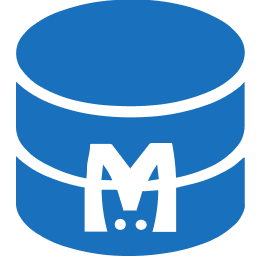You are looking at the documentation of a prior release. To read the documentation of the latest release, please
visit here.
New to KubeDB? Please start here.
Redis External Connection Initialization using Redis Announce
Redis Announce is a feature in Redis that enables external connections to Redis replica sets deployed within Kubernetes. It allows applications or clients outside the Kubernetes cluster to connect to individual replica set members by mapping internal Kubernetes DNS names to externally accessible hostnames or IP addresses. This is useful for scenarios where external access is needed, such as hybrid deployments or connecting from outside the cluster.
Before You Begin
At first, you need to have a Kubernetes cluster, and the kubectl command-line tool must be configured to communicate with your cluster. If you do not already have a cluster, you can create one by using kind.
Now, install KubeDB cli on your workstation and KubeDB operator in your cluster following the steps here.
To keep things isolated, this tutorial uses a separate namespace called demo throughout this tutorial.
$ kubectl create ns demo
namespace/demo created
Note: YAML files used in this tutorial are stored in docs/examples/redis folder in GitHub repository kubedb/docs.
Redis Cluster with Announce
Create DNS Records
Create dns/IP with port and bus-port, let’s say, Redis has 2 replicas and 3 shards.
Example:
| DNS/IP | port | bus port |
|---|---|---|
| rd0-0.kubedb.appscode | 10050 | 10056 |
| rd0-1.kubedb.appscode | 10051 | 10057 |
| rd1-0.kubedb.appscode | 10052 | 10058 |
| rd1-1.kubedb.appscode | 10053 | 10059 |
| rd2-0.kubedb.appscode | 10054 | 10060 |
| rd2-1.kubedb.appscode | 10055 | 10061 |
Below is the YAML for Redis Announce.
apiVersion: kubedb.com/v1
kind: Redis
metadata:
name: redis-announce
namespace: demo
spec:
version: 7.4.0
mode: Cluster
cluster:
shards: 3
replicas: 2
announce:
type: hostname
shards:
- endpoints:
- "rd0-0.kubedb.appscode:10050@10056"
- "rd0-1.kubedb.appscode:10051@10057"
- endpoints:
- "rd1-0.kubedb.appscode:10052@10058"
- "rd1-1.kubedb.appscode:10053@10059"
- endpoints:
- "rd2-0.kubedb.appscode:10054@10060"
- "rd2-1.kubedb.appscode:10055@10061"
storageType: Durable
storage:
resources:
requests:
storage: 20M
storageClassName: "standard"
accessModes:
- ReadWriteOnce
deletionPolicy: WipeOut
Here,
.spec.cluster.announce.typespecifies preferred dns type. It can be hostname or ip..spec.cluster.announce.shardsspecifies the DNS names for each shards in the replica set..spec.cluster.announce.shards.endpointsspecifies the DNS names for each pod in the specific shard.
Note: Here we need to add endpoints as <IP/DNS>:< port>@
Now, wait until redis-announce has status Ready. i.e,
$ watch kubectl get rd -n demo
Every 2.0s: kubectl get rd -n demo
NAME VERSION STATUS AGE
redis-announce 7.4.0 Ready 6m56s
To check assigned DNS/IP or port or bust port list for every pod you can run:
$ kubectl exec -it -n demo redis-announce-shard0-0 -- cat /tmp/db-endpoints.txt
redis-announce-shard0-0 rd0-0.kubedb.appscode 10050 10056
redis-announce-shard0-1 rd0-1.kubedb.appscode 10051 10057
redis-announce-shard1-0 rd1-0.kubedb.appscode 10052 10058
redis-announce-shard1-1 rd1-1.kubedb.appscode 10053 10059
redis-announce-shard2-0 rd2-0.kubedb.appscode 10054 10060
redis-announce-shard2-1 rd2-1.kubedb.appscode 10055 10061
Redis Cluster without Announce
If the Redis cluster is initialized without announces, this will get start with it’s own pod IP.
Below is the YAML for Redis:
apiVersion: kubedb.com/v1
kind: Redis
metadata:
name: redis
namespace: demo
spec:
version: 7.4.0
mode: Cluster
cluster:
shards: 3
replicas: 2
storageType: Durable
storage:
resources:
requests:
storage: 20M
storageClassName: "standard"
accessModes:
- ReadWriteOnce
deletionPolicy: WipeOut
Now, wait until redis has status Ready. i.e,
$ watch kubectl get rd -n demo
Every 2.0s: kubectl get rd -n demo
NAME VERSION STATUS AGE
redis 7.4.0 Ready 6m56s
To check the endpoint type run:
$ kubectl exec -it -n demo redis-shard0-0 -- cat /tmp/endpoint-type.txt
ip
To check assigned DNS/IP or port or bust port list for every pod you can run:
$ kubectl exec -it -n demo redis-shard0-0 -- cat /tmp/db-endpoints.txt
redis-shard0-0 10.244.0.34 6379 16379
redis-shard0-1 10.244.0.27 6379 16379
redis-shard1-0 10.244.0.30 6379 16379
redis-shard1-1 10.244.0.28 6379 16379
redis-shard2-0 10.244.0.33 6379 16379
redis-shard2-1 10.244.0.32 6379 16379
Cleaning up
To cleanup the Kubernetes resources created by this tutorial, run:
kubectl delete rd -n demo redis
kubectl delete rd -n demo redis-announce
If you would like to uninstall the KubeDB operator, please follow the steps here.
Next Steps
- Backup and Restore Redis databases using KubeStash.
- Initialize Redis with Script.
- Monitor your Redis database with KubeDB using out-of-the-box Prometheus operator.
- Monitor your Redis database with KubeDB using out-of-the-box builtin-Prometheus.
- Use private Docker registry to deploy Redis with KubeDB.
- Detail concepts of Redis object.
- Detail concepts of redisVersion object.
- Want to hack on KubeDB? Check our contribution guidelines.



































